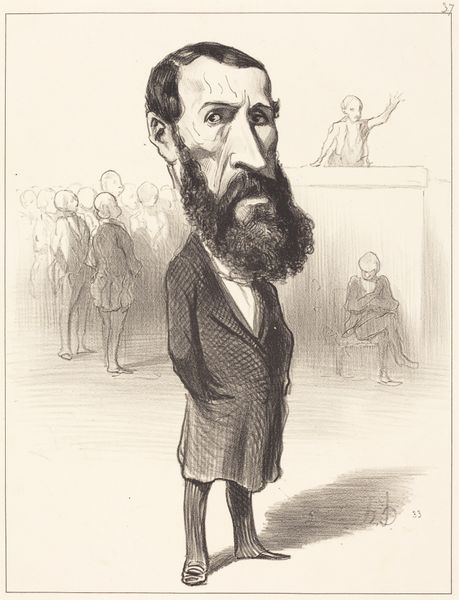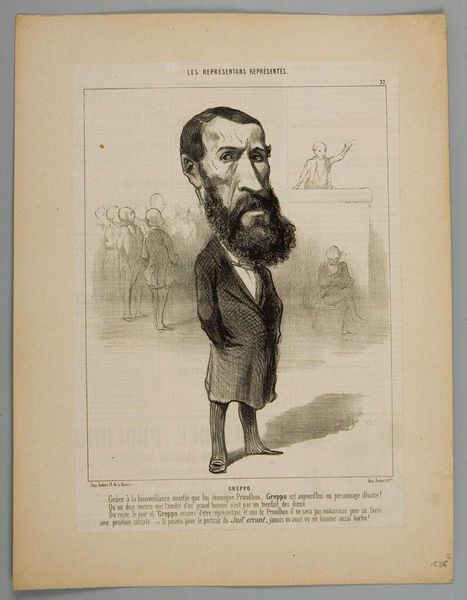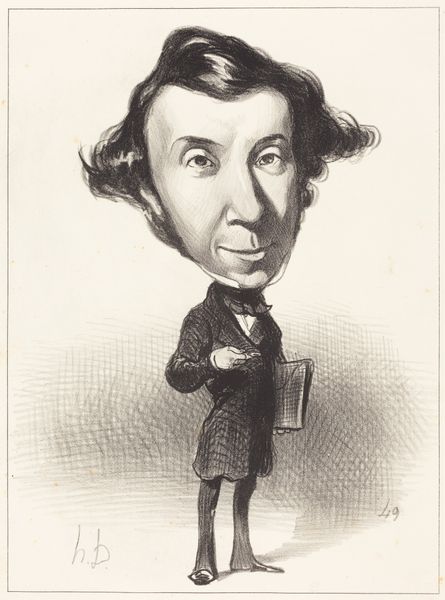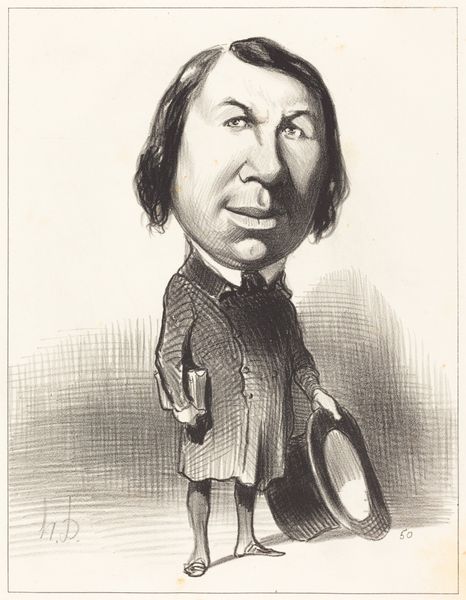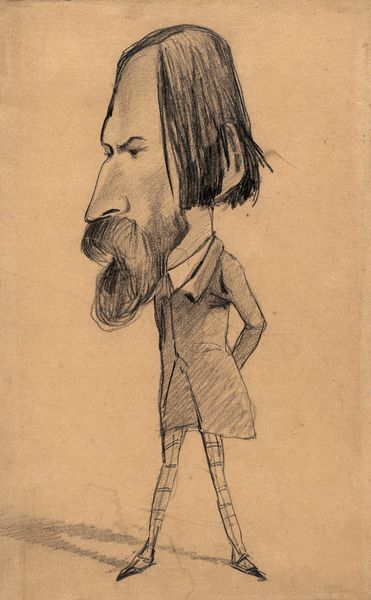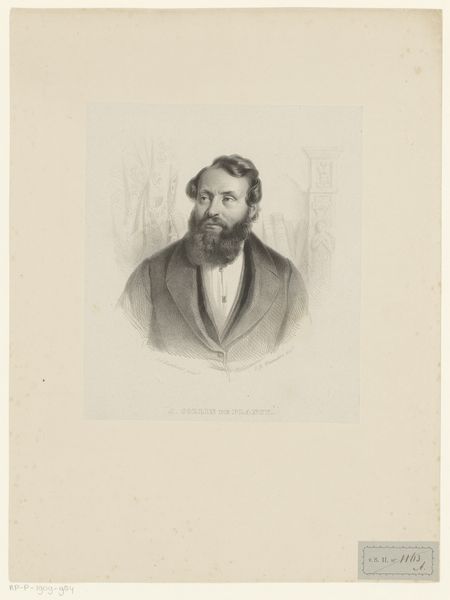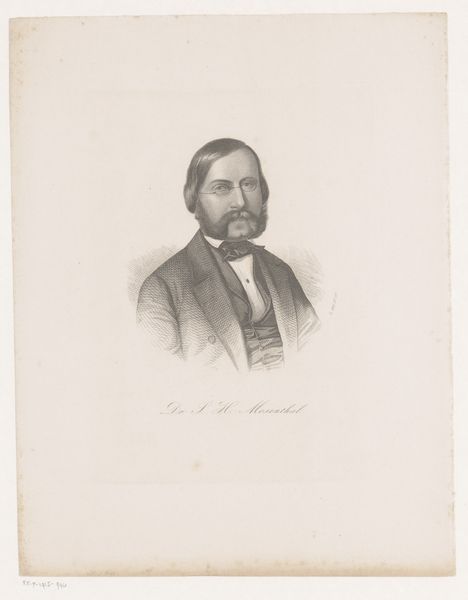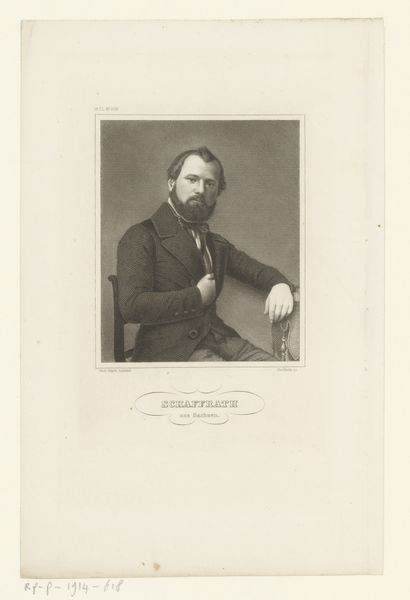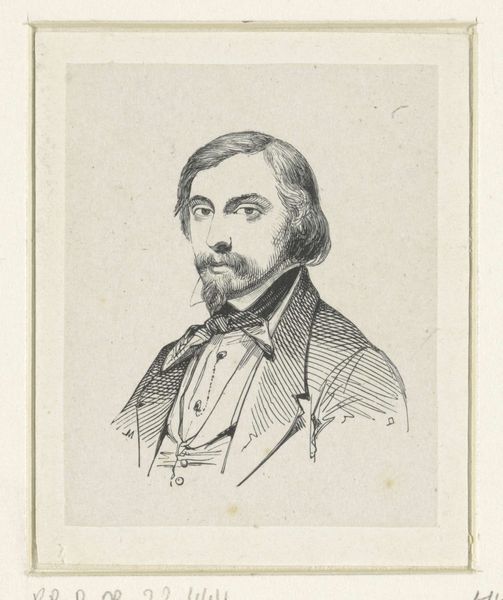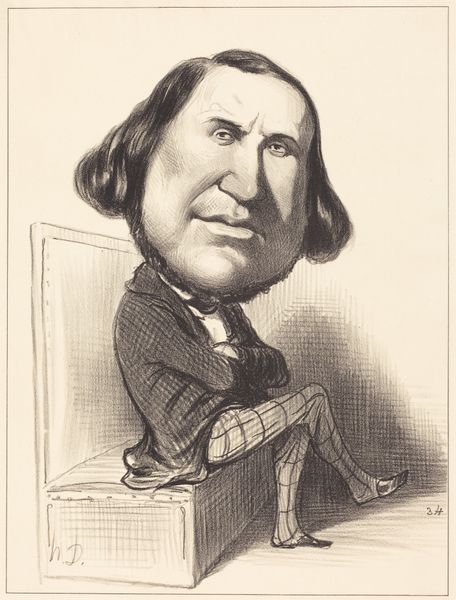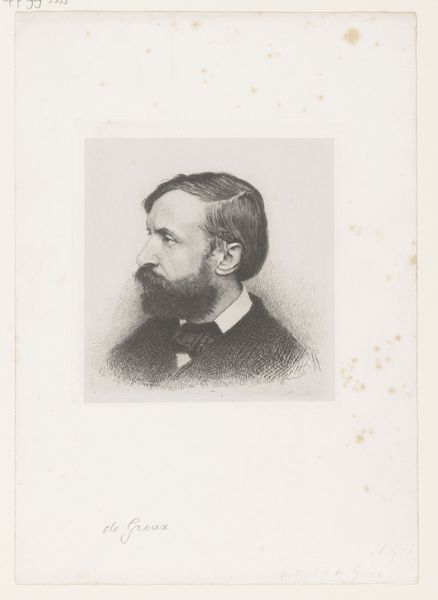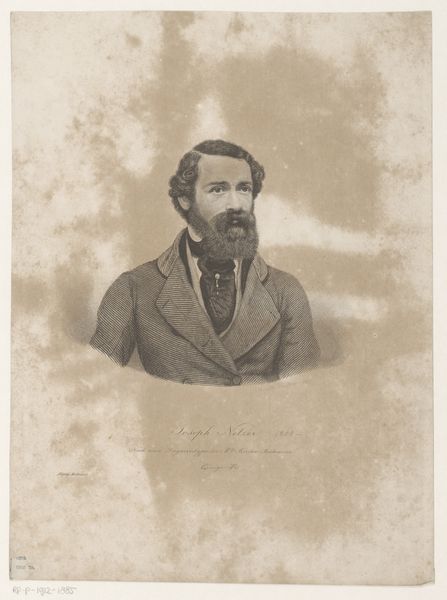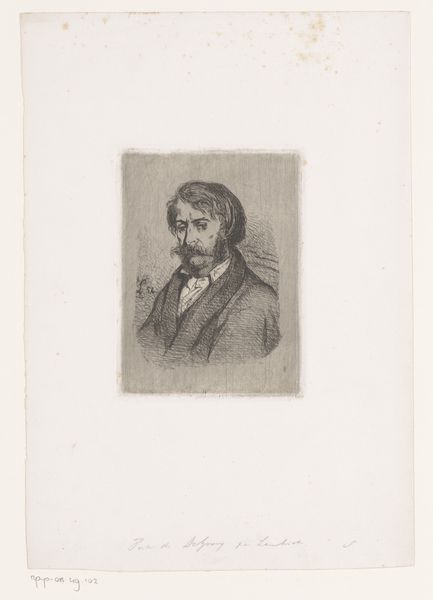
lithograph, print, pencil
#
portrait
#
lithograph
# print
#
caricature
#
pencil sketch
#
caricature
#
figuration
#
pencil drawing
#
romanticism
#
pencil
Copyright: National Gallery of Art: CC0 1.0
Curator: This is Honoré Daumier's 1849 lithograph, "Ch. Ferdinand Gambon." A striking example of 19th-century French caricature. Editor: Yes, immediately I'm struck by the dynamic contrast! The massing of dark ink for the head and torso opposed to the delicate rendering of the legs is wonderfully absurd. Curator: Absolutely! Daumier was a master of capturing not just likeness but also the perceived character of his subjects. Gambon was a deputy of the French National Assembly and, like many of Daumier's subjects, represents a particular type within the bourgeois political landscape. Editor: You can definitely sense a certain tension. The exaggeration pushes the figure almost into the grotesque. Notice the scaling—that massive head balanced precariously on those slender legs. It hints at a precarious ego. Curator: Precisely! The exaggerated features, particularly the large head, were Daumier's way of commenting on Gambon’s perceived self-importance and perhaps intellectual vanity. It's worth remembering that Daumier’s caricatures often landed him in trouble with the authorities; he saw his art as a tool for social critique. Editor: It’s fascinating how he used the lithographic medium to his advantage, the textures offering depth but also contributing to a somewhat smudged and rushed quality that amplifies the immediacy of the satire. The composition, with the figure leaning so casually against what I presume to be furniture, provides an intimate feeling almost as if we were intruding. Curator: That immediacy speaks to Daumier’s role in shaping public perception. Lithographs were widely circulated through newspapers and journals. So his art actively participated in political discourse, shaping and reinforcing opinions about political figures like Gambon. This wasn't just art for art’s sake; it was a powerful form of visual journalism, albeit highly opinionated! Editor: A compelling fusion of form and social commentary, certainly. It holds a mirror up to both artistic ingenuity and the tumultuous times of the Second Republic. Curator: It’s pieces like this that demonstrate the true potential of art as a record of societal attitude; capturing not just how things looked but also the atmosphere and attitudes toward powerful individuals during a pivotal moment in history.
Comments
No comments
Be the first to comment and join the conversation on the ultimate creative platform.
